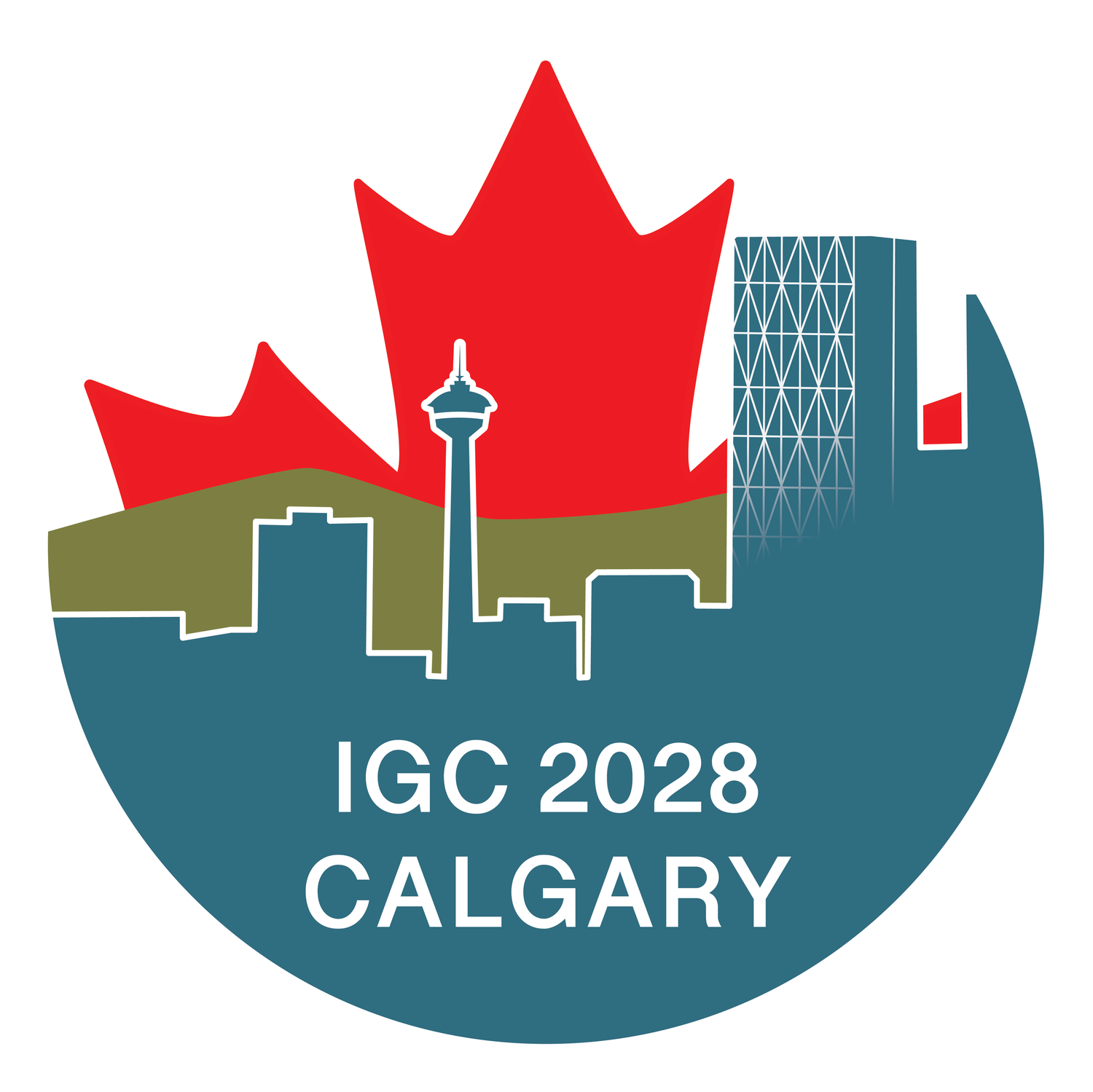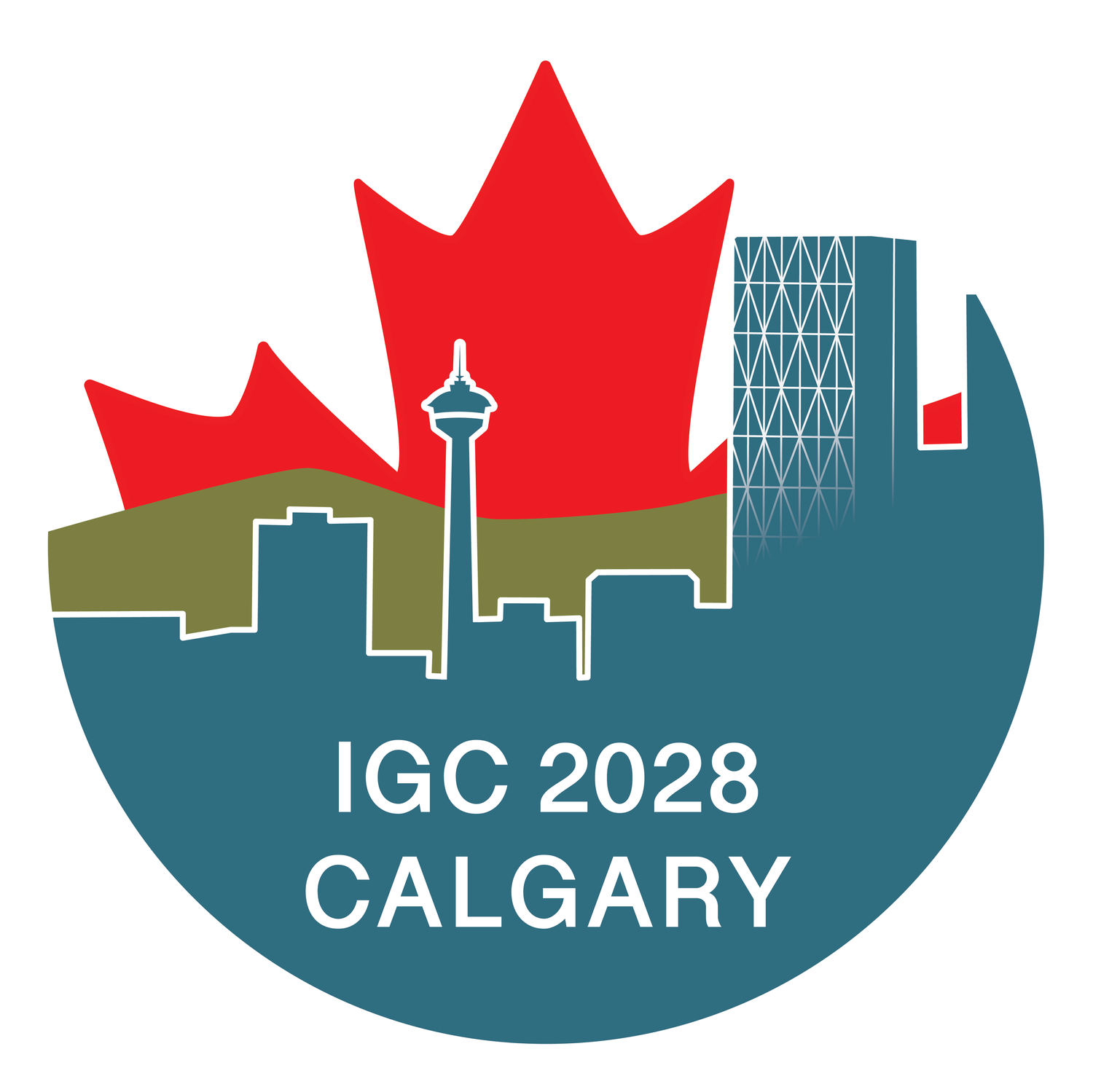Cordillera and Western Offshore
The Cordillera of western Canada extend from the Interior Plains to the west coast. Composed of folded and thrusted rocks that are largely Paleozoic sedimentary sequences in the east and metamorphic and igneous in various exotic terranes to the west, the two areas are separated by the Rocky Mountain and Tintina trenches. The trenches mark the approximate limit of the old craton of North America. The closest large city west of Calgary is Vancouver, where many delegates may fly into.
Southern Canadian Cordillera transect from Calgary to Vancouver (pre-meeting) and Vancouver to Calgary (post-meeting)
This field trip will take participants from Calgary west to Vancouver. This region includes several distinct morphogeological belts including the Foreland Belt (Paleozoic platformal carbonates and Mesozoic foreland siliciclastics of the Rocky Mountains), Omineca Belt (variably metamorphosed core of the Cordillera), Intermontane Belt (including Devonian to Paleogene volcanic and sedimentary strata of pericratonic and allochthonous terrane affinity) and the Coast Belt (mainly Jurassic to Paleogene plutonic rocks). The Rocky Mountains show fantastic exposures of units repeated by Late Cretaceous to Eocene fold and thrust tectonics. Other highlights include high-grade metasedimentary rocks, ocean floor basalts, far-travelled exotic limestones and granitic plutons.
Participants should book one of their flights to/from Vancouver.
Duration: 4 days.
Image credit: K Boggs
The Hope Slide and Fraser Valley Geology
The field trip will visit the Hope Rockfall avalanche site some 150 km east of Vancouver. The ~ 47 million cubic metre slide took place on the side of Johnson Ridge in the Nicola Valley southeast of Hope on January 9, 1965, killing four passing motorists. The cause seems to be related to slope instability, perhaps caused by a combination of geology – highly jointed greenstones overlying sheared felsite, and water seepage. The field trip will visit the site and the nature of the slide discussed.
The field trip will start and end in Calgary.
Duration: 1 day.
Cruising the Inside Passage to Alaska
Vancouver is the start and end of voyages to Alaska through the inside passive that travels along the BC coastline, passing Vancouver Island, the Haida Gwaii (Queen Charlotte) Islands to Skagway and return. Participants will have lectures on the geology along this scenic route.
Duration: 7 days.
Image credit: Northeast Pacific Deep-Sea Expedition Partners & CSSF ROPOS
The Icefield Parkway Geology and Glacial Scenery
This field trip would follow the Trans-Canada Highway to take participants west of Banff townsite to Lake Louise and then along the spectacular Icefield Highway to the Athabasca Glacier. This is the most accessible of all Canadian glaciers. Participants can travel onto the glacier in specially equipped vehicles. There will be lots of opportunity to discuss the geology along the route and some questions of climate change that are documented by the retreat of this glacier.
Field trip will start and end in Calgary.
Duration: 3 days.
Image credit: Murdoch McKinnon
Geology of the City of Vancouver and Environs
Vancouver is the largest city on the west coast of Canada, situated over the subducting Juan de Fuca Plate. This plate is the smallest, and one of fastest moving plates with a very high concentration of submarine volcanoes. Consequently, Vancouver faces several environmental challenges. These include potential risks from earthquakes and any associated tsunami, and flooding from the Fraser River. Other environmental hazards close by include potential rockfalls on highways and possibly ash and lahar events from nearby volcanic centers. These aspects will be explored on excursions departing from Vancouver.
Duration: 1 day.
Image credit: John Clague
The Burgess Shale and the Geological Setting near Field, BC, Yoho National Park
The Burgess Shale site and the Walcott Quarry are part of a UNESCO World Heritage Site. Visits can only be made with a licensed guide, provided for you. This is a full day hiking trip of approximately 12 hours of hiking. Participants must be fit for this hike that involves a 22 km return trip and a 1,000 m vertical ascent (trail hiking, no scrambling). Participants will enjoy spectacular scenery and the opportunity to visit one of the most famous fossil localities in the world. This is where Walcott discovered the remains of 505-million year old soft-bodied organisms representing the wide diversity of life in the Cambrian seas. The Mt. Stephen ascent is also arduous.
The excursion will start and end in Calgary.
Duration: 2 days.
Image credit: P. Johnston
Volcanic Centers near Vancouver
North of Vancouver there are several recently (within the last 15,000 and as young as 2,400 years) active volcanic centers. East of Vancouver just across the border in Washington State is Mt. Baker, a volcano with a major eruption some 5,740 years ago. There has been minor eruptive activity in the 1800s and more recent seismic and hydrothermal activity (but no eruption) in 1975. This field trip will explore volcanic centers in this region including the Mt. Meager complex northeast of Whistler, nearby Mt. Garibaldi and Mt. Cayley, and Mt. Baker.
Fieldtrip will start and end in Vancouver.
Duration: 4 days.
Image credit: Steve Grasby
Rocky Mountain Research Basins: Alpine Hydrogeology and Ecohydrology
Alpine environments form the headwaters of some of the largest and most important watersheds around the globe. The Canadian Rocky Mountains are no exception, sustaining river flow to downstream population centres including Calgary, and supplying essential irrigation water for crops on the interior plains.
This field excursion will make stops at two catchment-scale Rocky Mountain research basins within a day’s drive of Calgary. At Lake O’Hara research basin in Yoho National Park, participants will hear from University of Calgary researchers working to better characterize the physical processes fundamental to alpine hydrogeology. While visiting the research basin at Fortress Mountain in the Kananaskis region, participants will engage with researchers from the Universities of Calgary, Saskatchewan, and Waterloo. These researchers are seeking to better understand alpine critical zone and ecohydrological processes.
Participants will have the opportunity to attend the linked short course entitled “Exploring alpine water towers: Hydrogeology and critical zone processes at the height of the world”.
Duration: 2 days.
Image credit: Murdoch McKinnon
OCEAN Networks Canada
This is both a real and a virtual field trip to examine the world’s first regional-scale cabled observatory network located off the west coast of Vancouver Island.
Participants will visit the University of Victoria where data is gathered from the optical network that extends across the Juan de Fuca plate. Real-time data is gathered and stored from a number of instruments deployed in various undersea environments ranging from the continental shelf to the abyssal plain and as far offshore as the spreading center on the Juan de Fuca Ridge. The gathered data is free and accessible through the Internet. The field trip will start and end in Vancouver.
Sightseeing will also be available in Victoria and at the Buchart Gardens.
Travel will be by bus and ferry to Victoria.
Duration: 1 day.
Image credit: Northeast Pacific Deep-Sea Expedition Partners & CSSF ROPOS









